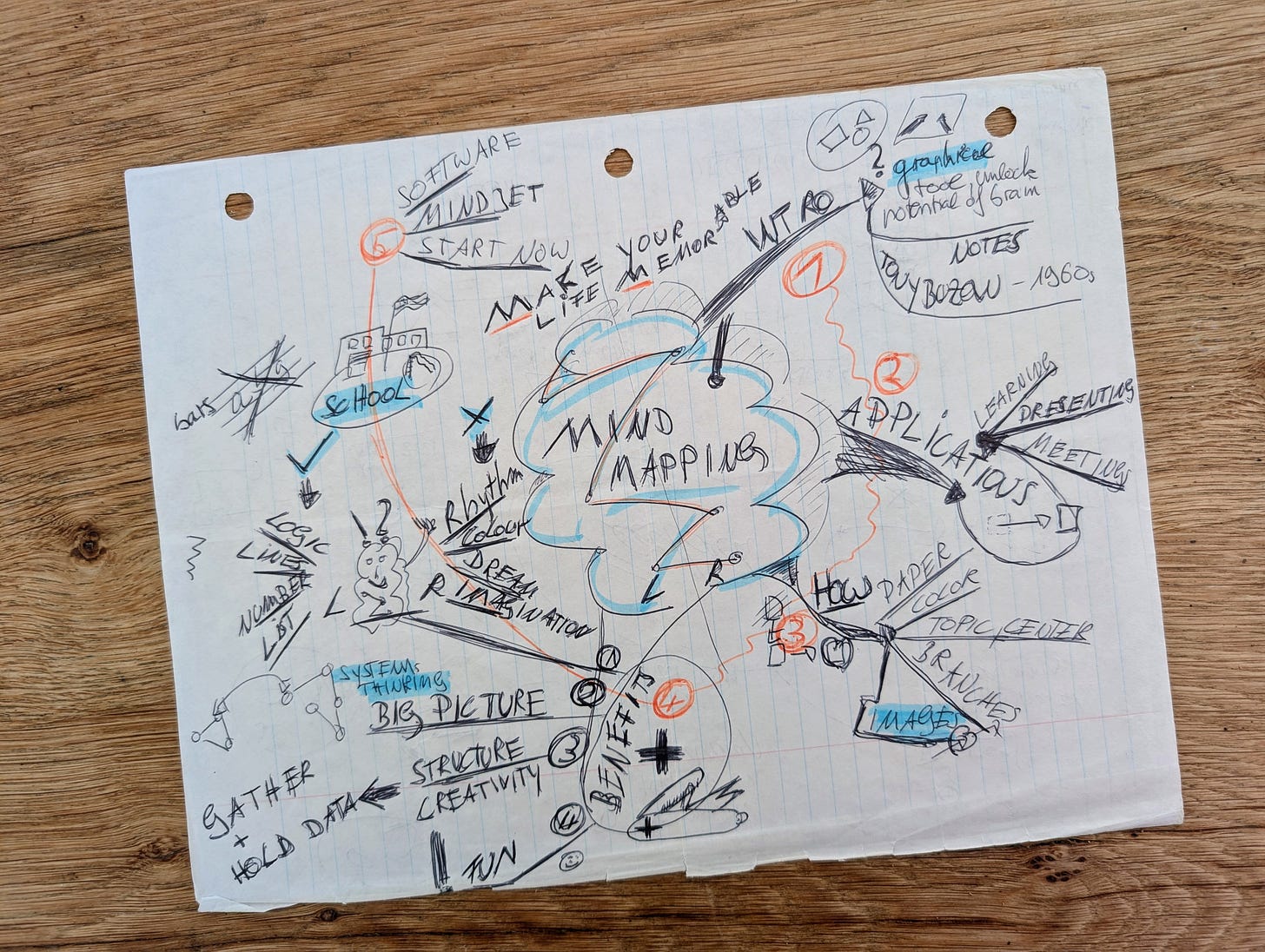Unleash Your Brain's Potential
How Mind Mapping Can Transform Your Thinking
Have you ever struggled to organize your thoughts, take effective notes, or prepare for a presentation? There's a powerful technique that can transform how you think, learn, and create: Mind Mapping.
I first encountered Mind Mapping during my university studies at FH Furtwangen around 1999/2000 and loved it on first sight. Developed by Tony Buzan in the 1960s, Mind Mapping is a graphical way of representing ideas and information, mirroring how our brains naturally work. In my first courses, alongside scientific research methods, we learned about Mind Mapping – a fantastic tool for structuring thinking, note-taking, and more.
From that moment on, I was hooked. Every lecture, every book, every project was transformed into a vibrant mind map. Over the years, I've created hundreds of them, regularly decluttering the older ones. Before exams, my mind maps became my primary study tools, far more effective than traditional linear notes.
Mind Mapping isn't just for students. It's a versatile tool applicable to various situations, from brainstorming and planning presentations to taking notes during meetings. While digital mind mapping software exists (like MindManager, which we used in a previous job), I've found the true magic lies in the tactile experience of using pen and paper.
How to Create a Mind Map
It's remarkably simple:
Start with a central idea: Write your main topic or idea in the center of a page.
Add branches: Draw lines radiating outwards from the center, each representing a key subtopic or concept.
Use keywords and images: Instead of writing full sentences, use keywords and draw simple images to represent ideas. This engages your visual memory.
Connect and expand: Draw further branches from the subtopics to explore related ideas in more detail. Use connecting lines to show relationships between different concepts.
Use color: Use different colors to highlight key themes, create visual distinctions, and make your mind map more engaging.
The beauty of mind mapping is that it's a dynamic process. Feel free to erase, redraw, and add to your map as your thinking evolves.
The result is a unique representation of your understanding, tailored to your brain, making it easier to remember and recall information.
Why Mind Mapping Works
Mind mapping offers several key advantages. It encourages system thinking by allowing you to see the big picture while still maintaining a structured approach. The process also engages multiple senses: the act of drawing, writing, and using colors creates a multi-sensory experience that significantly enhances memory and learning. Due to the limited space on a page, mind mapping forces focus and prioritization, ensuring you concentrate on the most important information. Finally, mind maps mirror how our brains naturally associate ideas, making them a natural and intuitive way to think and learn.
What works for me
For me, starting my branches from the top right and working clockwise feels natural. I often create the initial structure of a book summary or project first and then fill in the details as I progress.
While digital tools have their place, nothing can truly replicate the sensory experience of creating a hand-drawn mind map. The feel of the paper, the imperfections of handwriting, the act of drawing little icons—these all contribute to a deeper engagement with the material.
So, ditch the linear notes and unleash your brain's potential with the power of mind mapping. You'll be amazed at the difference it makes.
Have you ever tried mind mapping before? What was your experience?
What do you find most challenging about note-taking or brainstorming?





A big fan of mind mapping here too.